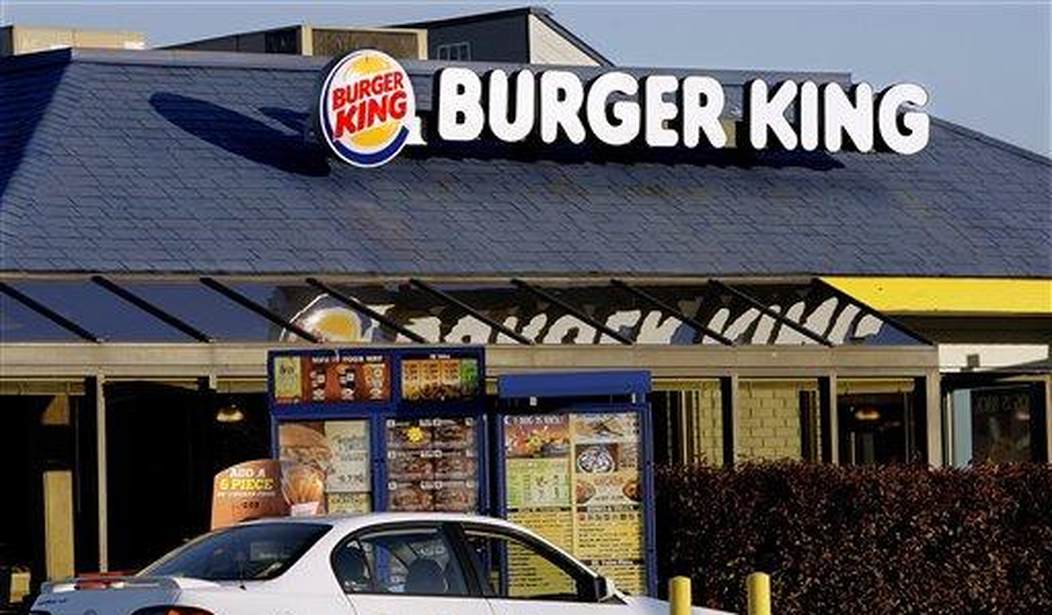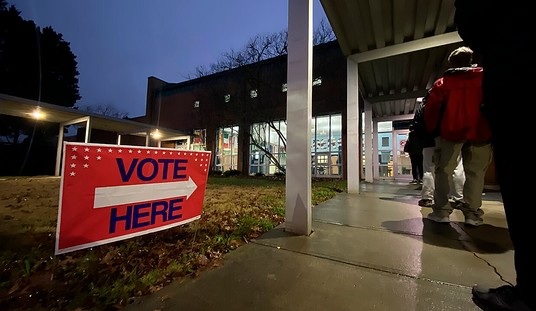Editor's Note: This article originally appeared in the October issue of Townhall Magazine.
Panola Pepper Corporation was started for all the right reasons. Located in the town of Lake Providence in Louisiana’s East Carroll Parish, the hot sauce company has been providing employment to those who live in one of the nation’s poorest areas. Year after year, East Carroll Parish ranks among the top 10 U.S. counties with the highest poverty rates. Time magazine once named the town of Lake Providence the “poorest place in America.”
Founded in 1983, Panola Pepper began as a wintertime business to give farm workers income during the three-month gap between the planting and harvest seasons. Employees would produce, bottle, and label hot sauce so they would not have to go on government assistance to make it through the winter. Fortunately, the product was so well received that the business became full-time. Thirty-one years later, Panola Pepper employs 35 people and continues to grow.
One major roadblock stands in the way of that growth, however. The employer mandate of the Patient Protection and Affordable Care Act, otherwise known as Obamacare, imposes new regulations that make it difficult for Panola Pepper to continue operating in the way it always has. In fact, Obamacare has put undue burden on small businesses and large corporations alike, impeding growth and increasing costs across the board.
Small Business Staying Small
The employer mandate will require that all American businesses with 50 or more full-time employees (defined as working 30 or more hours per week) provide health insurance or else pay a penalty. Businesses that do not comply will receive a steep fine of $2,000 for each full-time employee beginning with the 31st person. After being delayed twice since 2012, the mandate is expected to go into effect in 2016.
In the case of Panola Pepper Corporation, President and CEO Mike Coullard explains that his small business simply can neither afford to accommodate the mandate (by providing insurance for all employees) nor pay the penalty fines. While operating within a very small profit margin in this impoverished area of the country, Panola Pepper must now consider machinery options to replace employees.
“Now that we’re looking at getting close to that number of 50 employees, we are starting to look at automated machinery instead of people as a viable option to meet our growth needs,” Coullard tells Townhall. “And they’re certainly out there. You can buy faster equipment to eliminate people from virtually every position on our assembly line. It takes about 13 people to run the line and we could spend half a million dollars on better equipment and eliminate about eight of those people. We are not doing this because it’s not part of our culture, but if we are forced to provide health insurance to our employees, then that half a million dollars seems a whole lot easier to spend.”
Recommended
Another option is to cut employee hours so they are no longer considered full-time. “These are the tough decisions that we face,” Coullard explains. “Our options are limited. Keep doing business the way we always have and be forced to go out of business because we can’t afford to pay anyone, or make some of these tough decisions that the government is putting on small businesses.”
Coullard stresses that the company’s objective is to employ as many people as possible, turning any profit back into the development of new products so they can hire more people. “When limits by government are put on your ability to grow and continue to do things the same way,” he says, “unfortunately, people are affected.”
Big Businesses Facing Higher Costs
Small businesses like Panolo Pepper are more willing to tell the truth about plans to mitigate Obamacare’s high costs than large corporations that fear boycotts and bad press from progressive activists. For example, the media chastised Darden Restaurants, the owner of Olive Garden and Longhorn Steakhouse, in 2012 after announcing plans to limit the number of full-time employees per restaurant. Large companies are still finding ways to deal with Obamacare’s costs; they just aren’t making any public statements about it.
But by exactly how much are costs rising as a direct result of Obamacare? Since the law passed, chief human resource officers are becoming increasingly attuned to the health care aspect of their overall job. Dr. Patrick Wright of the University of South Carolina’s Darla Moore School of Business conducted a survey of top CHROs across the country, focusing on their company’s response to the employer mandate. The results revealed that a whopping 78 percent of respondents reported health insurance cost increases by an average of 7.73 percent. Additionally, 37 percent indicated that labor costs have increased by an average of 5.6 percent. Only 19 percent experienced no net change in costs.
The shift to high-deductible consumer-directed health plans is also becoming more commonplace as a means to reduce costs. Employers hope that by putting more responsibility into the hands of the employee, fewer services will be used. But Wright notes there are downsides, too.
“On the plus side, the move to CDHPs will increasingly introduce market mechanisms into the health care market. On the negative side, however, it will be a difficult transition in terms of a change of mindset for both employees and health care providers. Employees will have to take more responsibility for choosing lower cost providers and providers will have to become significantly more transparent in their prices.”
Wright also found that 73 percent of respondents plan to, or already have, moved employees to consumer-directed plans, and 71 percent have raised or will raise employee contributions toward health insurance. Nearly a quarter said they will more rigorously ensure part-time workers stay beneath the 30-hour limit.
A Logistical Nightmare
It’s no secret that Obamacare is unpopular among CHROs. In a survey by the HR Policy Association, only 10 percent said the law would help their companies more effectively control health care costs. Forty-eight percent predicted costs would increase by 0 to 5 percent. Thirty-seven percent predicted costs would increase by 6 to 10 percent. Five percent predicted costs would increase by more than 10 percent.
Eighty-five percent of respondents reported they find it troubling that the law has increased access to the health care system without making significant improvements in the efficiency and affordability of that system. And shockingly, 68 percent said that if other large employers decide to no longer offer health care coverage, their companies might give serious consideration to doing the same.
Christine Cunneen, CEO of Hire Image LLC, a company that performs background screenings and drug tests, has seen an 86 percent increase in health care premiums over the last seven years. Her employees’ $500 deductible has now quadrupled to $2,000.
“Two people under my plan have had to pay $2,000 out of pocket, whereas in the past, they typically didn’t get to the deductible unless they were getting care out of plan or out of network,” Cunneen explains. “Now, they go for blood work and are charged $150 for a draw fee. There are a lot of underlying costs that no one is really talking about.”
“I think there should be some type of solution, a lot of it is falling on the backs of the individuals who have been covered in the past,” she notes. “It’s quite expensive for us to stay competitive in the job market if you’re keeping good staff.”
As a perk, Cunneen covers 75 percent of health care premiums for her employees and will continue to do so for now.
Similarly, John Overton, owner and CFO of IT company Turn Key Solutions, generously covers 80 percent of his employees’ health benefit package.
“For professional positions, such as the caliber of IT professionals we seek to hire, quality benefits are high on the priority list of potential candidates,” Overton explains. “In the past we could say, ‘In addition to competitive salary, we offer the same great health care benefits as most Fortune 500 companies.’ Now, instead of highlighting premium health care benefits, we highlight that we pay 80 percent of the employee’s basic health care benefit package.”
To compensate for the more basic health insurance plan, Overton has increased the starting pay for new positions by as much as 20 percent.
“It is disappointing not being able to offer my employees premium health care plans that are affordable, but we are trying to make up for it by paying more,” he says. “We’re growing and hiring, but health care options and rates have become more and more of an impediment to growth rather than the improvements that the [Obama] administration promised.”
Government Picking Winners and Losers
The American Health Policy Institute recently calculated the costs of Obamacare over a 10-year period. “We ... found that the marginal costs of the ACA for larger corporations are about $5,000 per employee over a 10-year period,” says Dr. Tevi Troy, AHPI’s president, former-deputy secretary of Health and Human Services, and former-senior White House aide in the George W. Bush administration. “That is just ACA-related hikes; that does not include health care inflation or the aging work force.”
“For the average of one of these large corporations (i.e. 10,000-plus employees), we would see costs in the $160 to $200 million dollar range over that 10-year period. Again, this is just marginal ACA costs,” he continues. “Every large company is making changes in their health care system, it’s just the fact. ... There are about 170 million people in employer-sponsored care right now and they are all looking at the system saying, ‘What are we going to do differently over the next 10 years?’ We don’t know the extent of all the changes.”
Compared to small businesses, huge corporations have infrastructures that make it easier to absorb and redistribute costs. A large sum of the increases can be made up for by passing it along to employees through higher premiums.
“Large companies have such large employee bases that they’re not concerned about one marginal hiring decision changing the entire scope of how they deal with health care. They’re more interested in the marginal cost per employee than what the overall costs are of hiring,” Troy explains.
“The people who get subsidies will see benefits and the people who don’t will see higher costs, I mean it’s always been the case that there will be winners and losers in this law,” he adds.
Raising the Costs of Job Creation
Randy Bradley, owner of a Burger King franchise through Kadina Corporation, tells Townhall he might have to drop employee retirement plans and cut hours to offset the new health insurance regulations.
“We have to look at a number of solutions because if the cost of insurance per employee is more than my profit, which it will be, that will drive me out of business unless I take other actions. There will be a combination of having to reduce other employment costs. For instance, my employees have a retirement plan available that will probably end because I can’t afford to provide both health care and retirement.”
It’s tricky business in the fast food world when one must raise prices to make up for increased costs.
“There is only a certain amount of elasticity in the market,” he explains. “If I go beyond a certain point in raising prices, customers are going to come less often because they can’t afford to come at the new prices. We have very difficult decisions to make. What costs do we cut, what prices do we raise, how much do we raise them by, and how do we comply with all of this regulation? There are a lot of very difficult decisions involved here.”
Bradley explains: “They have defined large business by the number of employees you have, but the number of employees you have does not give any indication as to whether health insurance is affordable. If you’re making $1,000 per year per employee and the insurance will be $3,000 per employee, it does not matter if you have five employees or 500 employees, the profit per employee dictates whether or not you can afford insurance.
“It is absolutely going to cost more to hire people and that also means we are going to be able to give less in the way of wage increases,” he continues. “Within a business, you have a certain amount of money for each type of expense: utilities, insurance, food costs, paper costs, etc. Those things don’t go away, so I only have a certain percentage of the money I get from my customers to spend on labor costs. If they force me to put more money into health insurance, I’m going to have to reduce the number of labor hours I can spend. It’s a limited pool. If I can only spend, say, 18 percent on my crew members’ hours spent working, I am still only going to be able to spend 18 percent. If the cost is going up per person, I’m going to have to cut hours.”
These are not isolated cases. According to surveys from the Federal Reserve Bank of New York, 17 percent of businesses reported that they are reducing the number of workers they employ and 22 percent said they are reducing wages and salaries of those employees. Twenty-five percent said they are increasing consumer prices to help mitigate costs. Sixty-nine percent of businesses plan to increase employee contributions by means of higher copays, deductibles, and premiums.
This is simply not sustainable. Obamacare was sold to the American people as a budget-neutral law that would even save the average family $2,500. Instead, Obamacare has raised health care costs, forced millions of Americans to buy more health care than they wanted, and killed countless jobs in the process.
If one thing is certain, it is that Obamacare has been effective in redistributing the wealth from those who previously had employer-based insurance to those who did not. With the Congressional Budget Office predicting that 30 million people will still be uncovered by the end of the decade, Americans continue to ask if this was really worth it. •
























Join the conversation as a VIP Member